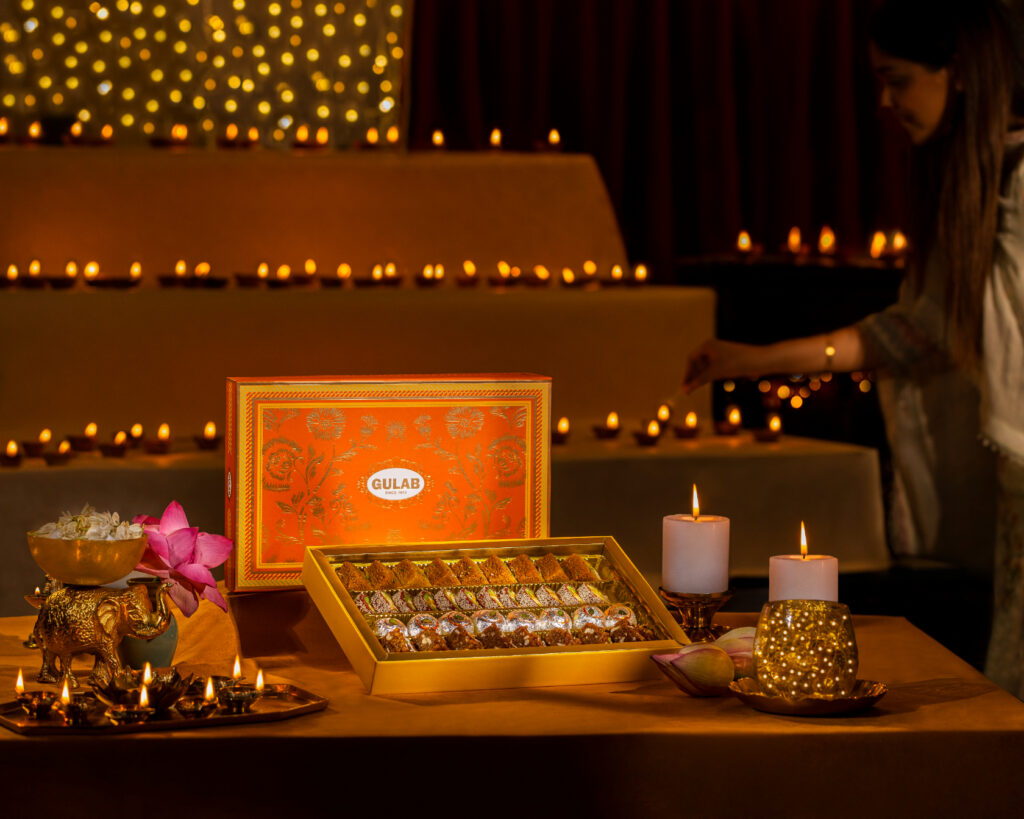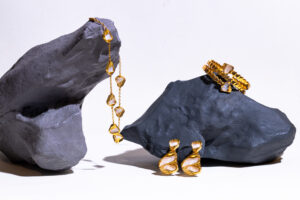In today’s competitive market, Campaign Photography Shoots can make or break your brand’s story. High-quality images not only showcase your products but also connect emotionally with your audience. This is where my expertise comes in.
Based in Delhi NCR, I, Ravikant, specialize in e-commerce and food photography. With over 15 years of experience, I’ve worked with renowned Indian brands, helping them stand out in crowded markets. One notable success was a Delhi spice brand that saw a 40% increase in sales after our collaboration.

Planning a shoot involves several key stages: pre-production, team management, execution, and post-processing. Each step requires a blend of technical expertise and creative vision to ensure the final images align with your brand’s identity.
My work has earned national recognition, and I’m passionate about helping brands tell their stories through compelling visuals. Explore my portfolio to see how I can elevate your next project.
Key Takeaways
- Strategic product shoots enhance brand storytelling.
- Ravikant has 15+ years of experience in e-commerce and food photography.
- A Delhi spice brand saw a 40% sales increase after a successful shoot.
- Key stages include pre-production, execution, and post-processing.
- Technical expertise and creative vision are essential for success.
Introduction to Campaign Photography
Visual storytelling has become a cornerstone of modern advertising. In a world where consumers are bombarded with information, compelling visuals stand out. Research shows that 68% of consumers trust product images over descriptions, making professional visuals essential for brand success.

Brands that invest in high-quality imagery often see a significant return. For example, campaigns using professional visuals achieve a 3x ROI. This highlights the power of visuals in driving engagement and sales.
Why Campaign Photography Matters
Effective advertising relies on visuals that resonate with the audience. Gestalt principles, such as proximity and similarity, play a key role in creating impactful images. These principles help viewers process information quickly and emotionally connect with the brand.
Consider Smirnoff’s sorbet-vodka campaign. The vibrant, cohesive imagery captured attention and boosted sales. In contrast, Toyota Avalon’s “smoke monster” ad failed to connect, proving that visuals must align with the brand’s message.
About Me: Ravikant Photography
With over 15 years of experience, I’ve helped brands like a Delhi-based spice company achieve a 200% increase in Instagram engagement. My expertise in food photography and hybrid shoots—combining video and stills—ensures versatile, high-quality content for your brand.
My studio is equipped with state-of-the-art tools, and I hold certifications in advanced food photography. This allows me to deliver visuals that not only meet but exceed expectations.
| Successful Campaign | Failed Campaign |
|---|---|
| Smirnoff’s sorbet-vodka imagery | Toyota Avalon’s “smoke monster” ad |
| Vibrant, cohesive visuals | Misaligned, confusing visuals |
| Boosted sales and engagement | Failed to connect with the audience |
Common mistakes in the Indian market include poor lighting, lack of planning, and ignoring social media trends. By avoiding these pitfalls, brands can create visuals that truly stand out.
Pre-Production Planning for a Successful Shoot
The success of any shoot depends on thorough pre-production planning. This stage ensures every detail aligns with your vision and saves time during execution. According to the 80/20 rule, 80% of the work happens before the shoot day.
Defining Your Campaign Goals
Start by outlining your objectives. Are you showcasing a product, telling a story, or boosting sales? Clear goals guide every decision, from locations to lighting. For example, a Delhi-based spice brand aimed to highlight authenticity, which influenced our choice of natural lighting and rustic backdrops.
Creating a Shot List and Storyboard
A detailed shot list ensures no moment is missed. I use a template refined through Amazon India campaigns, which includes product angles, close-ups, and lifestyle shots. Pair this with a storyboard to visualize the flow of the shoot.

Scouting Locations and Securing Permits
Location scouting is critical, especially in Delhi. I’ve navigated the Delhi Municipal permit process multiple times, ensuring smooth approvals. For outdoor shoots, I recommend a checklist of 23 essential items, from backup batteries to weather gear.
Lighting is another key factor. Here’s a 5-point checklist for Indian weather conditions:
- Use diffusers to soften harsh sunlight.
- Carry reflectors for shaded areas.
- Plan shoots during golden hours for natural warmth.
- Have backup lighting for cloudy days.
- Test setups before the shoot day.
Budgeting is equally important. For shoots ranging from ₹50,000 to ₹1,50,000, allocate funds for permits, equipment, and talent. Avoid common pitfalls like overlooking model release requirements or underestimating hybrid shoot costs.
Roles and Responsibilities on Set
A well-organized set is the backbone of any successful shoot. Clear roles and responsibilities ensure that every detail aligns with the vision. Whether it’s a small team or a large crew, collaboration is essential to create impactful content.

The Photographer’s Role
As the photographer, my primary focus is to capture the essence of the brand. This involves understanding the creative brief, setting up the right lighting, and ensuring every shot tells a story. According to ASMP selection criteria, a good photographer must also manage time effectively and adapt to unexpected challenges.
Working with Stylists and Art Directors
Stylists and art directors play a crucial role in shaping the visual narrative. In Delhi, stylists charge between ₹8,000 to ₹20,000 per day, depending on their expertise. My approach is to collaborate closely with them, ensuring that every element—from props to outfits—complements the shoot’s theme.
For example, during a recent project, we resolved a model-candidate outfit clash by brainstorming alternative options that aligned with the brand’s identity. This flexibility is key to maintaining harmony on set.
Managing Talent and Models
Working with models requires a balance of professionalism and empathy. I often use warm-up techniques inspired by Lakmé campaigns to help talent feel comfortable. This not only improves their performance but also results in more authentic content.
Here’s a checklist of 15 model release clauses to ensure compliance with Indian law:
- Name and contact details of the model.
- Usage rights for the images.
- Duration of the agreement.
- Compensation details.
- Confidentiality clauses.
| Indian Set Management | Western Set Management |
|---|---|
| Focus on adaptability and resourcefulness. | Emphasis on strict schedules and protocols. |
| Collaborative decision-making. | Hierarchical decision-making. |
| Flexible timelines. | Rigid timelines. |
By understanding these differences, I tailor my approach to suit the team’s dynamics, ensuring a smooth and productive shoot.
Executing the Shoot: Tips for Success
Executing a shoot requires precision, creativity, and adaptability to bring your vision to life. Whether you’re working in a studio or on location, mastering the details ensures high-quality images that resonate with your audience.
Lighting and Composition Techniques
Lighting is the backbone of any successful shoot. In Delhi, pollution often affects natural light, so I rely on diffusers and reflectors to soften harsh conditions. For outdoor shoots, I recommend the golden hour—early morning or late afternoon—for warm, flattering tones.
In the studio, I use a combination of softboxes and LED panels to mimic natural light. Here’s a quick comparison:
| Golden Hour Lighting | Studio Lighting |
|---|---|
| Natural warmth and softness | Controlled and consistent |
| Time-sensitive | Available anytime |
| Affected by weather | Weather-independent |
Capturing Authentic Moments
Authenticity is key to creating compelling images. I use seven coaching techniques to help talent express genuine emotions. For example, during a monsoon shoot, I encouraged the model to embrace the rain, resulting in dynamic, natural shots.
As one of my clients said,
“Ravikant’s ability to capture raw emotions transformed our campaign.”
Handling Challenges on Set
Unexpected issues are part of every shoot. In India, weather can be unpredictable, so I always carry a 12-item emergency kit, including portable lighting and backup batteries. During a recent monsoon shoot, my mobile studio saved the day.
LAN Airlines’ failed campaign serves as a cautionary tale. Their imagery lacked authenticity, proving that even the best equipment can’t compensate for poor execution.
By focusing on lighting, authenticity, and problem-solving, you can ensure a smooth and successful shoot. Explore my portfolio to see how I’ve applied these techniques to elevate product visuals.
Post-Production and Finalizing Your Campaign
Post-production transforms raw captures into polished masterpieces. This stage ensures your visuals align with your brand’s identity and resonate with your audience. From editing to distribution, every step is crucial for delivering high-quality images.
Editing and Retouching Images
Editing is where creativity meets precision. I use tools like Lightroom and Capture One to enhance quality, especially for Indian skin tones. Lightroom offers flexibility, while Capture One excels in color accuracy.
For a Delhi-based client, I retouched 300 images to highlight their product’s unique features. Following Photoshop ethics guidelines, I ensure edits remain authentic and true to the brand’s vision.
Selecting the Best Shots
Choosing the right visuals is an art. I rely on a structured process to shortlist the most impactful shots. For example, Reliance Jio’s social media success was driven by a curated selection of images that told a cohesive story.
Here’s a quick comparison of file formats for different uses:
| Format | Best Use |
|---|---|
| JPEG | Social media, web |
| PNG | Transparent backgrounds |
| RAW | Archival, high-quality edits |
Preparing Images for Distribution
Optimizing visuals for different platforms is essential. For Instagram carousels, I resize and format images to ensure seamless scrolling. A 5-point ADA compliance checklist ensures accessibility for all users.
Common pitfalls include WhatsApp compression, which can degrade quality. To avoid this, I recommend using high-resolution files and avoiding unnecessary compression.
Apple’s stock photo success highlights the importance of meticulous preparation. By following these steps, you can ensure your campaign visuals stand out in today’s competitive media landscape.
Conclusion
Bringing your brand’s vision to life requires a blend of strategy and creativity. From pre-production to post-processing, every step ensures your product stands out. Delhi NCR offers unique advantages, from diverse locations to skilled professionals, making it an ideal hub for your next project.
My client onboarding process takes 14-21 days, ensuring every detail aligns with your goals. To help you get started, I’m offering a free shoot blueprint PDF download. It’s a practical guide to streamline your planning.
Explore my portfolio to see how I’ve helped brands like yours achieve remarkable results. Cultural adaptation is key, and I ensure every shoot resonates with your audience.
Ready to elevate your brand? Let’s connect and create visuals that tell your story. Reach out today to discuss your next project.
FAQ
Why is campaign photography important for my brand?
Campaign photography helps tell your brand’s story visually, creating a strong connection with your audience. High-quality images can elevate your product’s appeal and make your advertising more impactful.
How do I define the goals for my shoot?
Start by identifying your target audience and the message you want to convey. Whether it’s showcasing a new product or building brand awareness, clear goals will guide every step of the process.
What should I include in a shot list?
A shot list ensures you capture all necessary images. Include details like angles, lighting setups, and specific product features. This keeps the shoot organized and efficient.
How do I choose the right location for my shoot?
Consider your brand’s aesthetic and the story you want to tell. Whether it’s a studio, park, or urban setting, scout locations in advance and secure any required permits.
What role does a photographer play on set?
As a photographer, I focus on capturing the vision of the campaign. This includes managing lighting, composition, and ensuring the images align with the creative brief.
How can I work effectively with stylists and art directors?
Collaboration is key. Communicate openly about the creative direction and ensure everyone understands the campaign’s goals. This teamwork leads to cohesive and stunning results.
What are some tips for handling challenges during the shoot?
Stay flexible and prepared. Whether it’s weather changes or unexpected delays, having a backup plan and maintaining a positive attitude keeps the shoot on track.
How do I select the best images for my campaign?
Review all shots and choose those that best align with your goals. Look for images with strong composition, lighting, and emotional impact. Editing and retouching can further enhance the final selection.
What’s the best way to prepare images for distribution?
Optimize images for their intended use, whether it’s social media, print, or online ads. Ensure they meet technical requirements and maintain high quality across all platforms.






Leave a reply